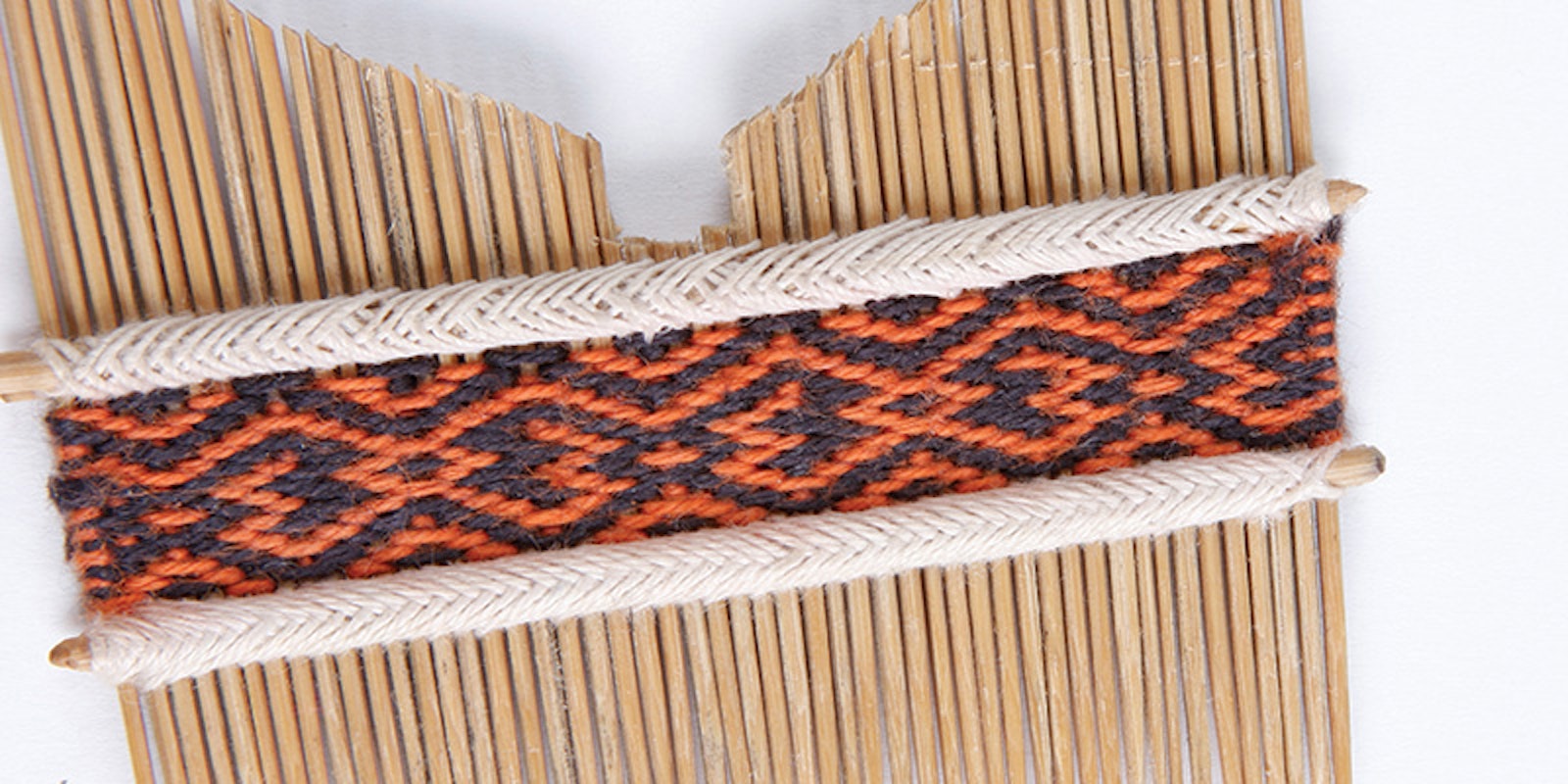Here are two wooden combs, their handmade components lashed together and decorated with handspun thread. The dark comb, adorned with macaw feathers, came from the Shipibo, a people indigenous to the Ucayali river valley of eastern Peru. The light comb may also be of Shipibo origin or, as the textile researcher Peter Collingwood and others have suggested, may have come from India, where similar combs are produced. Whether they are from the same part of the world or are cases of parallel invention, these combs are ingeniously constructed.
Comb. Maker unknown. Wood and cotton thread. Origin and date
unknown. 2⅞ inches (7.3 cm) long at longest point x 3 inches (7.6 cm) wide. Collection of Linda Ligon. All photos by Ann Swanson.
Comb. Shipibo; maker unknown. Wood, cotton thread, macaw feathers. Peru. Date unknown. 2½ inches (6.4 cm) long x 4½ inches (11.4 cm) wide. Collection of Linda Ligon.
The wood of the light comb appears to be bamboo. The threads that hold it together and decorate it are handspun two-ply Z-twist cotton, about the size of buttonhole twist. The light thread is tightly twisted while the decorative threads are more loosely spun and colored with natural dyes.
The teeth of the dark comb are whittled from an extremely hard, dark wood, probably a type of ironwood called quebracho. The binding threads are of handspun two-ply Z-twist cotton that have been stained with a dark mud rich in iron.
Figure A
Although the light comb is more refined, it is also simpler. In The Maker’s Hand: A Close Look at Textile Structures, Collingwood describes the method of lashing the teeth to sticks laid perpendicular to them (see Figure A):
Lay teeth parallel with one holding stick horizontal across them.
Lash teeth to stick.
Work decorative center using two contrasting threads at a time for each row. When a dark thread goes over a certain number of teeth, a light thread goes under those same teeth. One side is the exact color-opposite of the other.
Lash a second holding stick to the teeth.
Figure B
The dark comb is made in essentially the same way, though the lashings are at once simpler and more elaborate, and the central decorative portion is simpler:
Lay teeth parallel with one holding stick horizontal across them.
Lash teeth to stick, working in one direction only (see Figure B).
Lash another stick in place, working in the opposite direction. This creates a herringbone effect. The “seam” between the two rows of lashing is covered with a doubled thread.
Work the decorative center using a single thread, going over different numbers of teeth with each pass to form a twill-like pattern.
Lash two more sticks in place as before. The macaw feathers are attached with a length of thread that has been tightly twisted and folded back on itself to form a sturdier four-ply thread.
The Shipibo men make these combs, often as gifts for women. The decorative lashing technique could have many applications, though. Just imagine.
Find this and other great articles in the July/August 2008 issue of PieceWork.





